Where
Lazio is a long, narrow region that runs alongside the Tyrrhenian Sea at the southern end of central Italy. It is bordered by Umbria to the north, Abruzzo to the east, Campania to the south and the Tyrrhenian Sea to the west. Lazio has a volcanic terrain with numerous lakes and a sandy coast.
There are many areas of archaeological interest in Lazio due to its strategic position in the Mediterranean and to the ancient civilizations that lived there from prehistory onwards. The Etruscans made northern Latium (as the area was then known) an important centre, followed by the Romans who founded the city of Roma (Rome) in the 8th century BC. It became their headquarters and capital of the mighty Roman Empire. Of the many famous Roman leaders, Julius Caesar, Caligula, Nero and Augustus are some of the best known.
Legend has it that Roma was founded by Romulus, the son of the god Mars and one of two abandoned twin babies (the other being Remus) who were raised by a she-wolf. La Città del Vaticano (The Vatican City), in the centre of Roma continues to be the headquarters of the Catholic Church and the Pope.
The city is the governmental and diplomatic centre of Italy and has always had a metropolitan feel, attracting artists and film directors, including Federico Fellini, Michelangelo Antonioni, and Pier Paolo Pasolini. Present-day Romans are known for being proud, wise, and civilised.
What to See
Roma – known as ‘the Eternal City’ – is one of the world’s greatest cities, with art and architecture from every period and hundreds of beautiful churches and museums. It is a wonderful city to explore and visit, on both sides of the Tevere (Tiber) River. It attracts tourists and pilgrims from all over the world. In Roma, sights that should not be missed include:
- the Pantheon (a 2nd century temple turned church – my personal favourite),
- Il Colesseo (Coliseum) (a 1st century amphitheatre used for gladiatorial fights and mock navel battles),
- Foro Romano (the Roman Forum- the commercial and political centre of ancient Rome),
- Piazza di Spagna (the Spanish Steps-a Baroque stairway with a fountain at the bottom and a church at the top),
- Castel Sant’Angelo (a 2nd century fortress with a great view),
- Piazza Navona (a Baroque square with a fountain, churches, and palaces),
- Fontana di Trevi (the Trevi Fountain, a Baroque 18th century fountain where it is customary to throw two coins over your left shoulder into the fountain to ensure a return visit and the fulfillment of a wish), and
- Villa Borghese (a large public park with beautiful gardens).
Within the Vatican City, don’t miss:
- Cappella Sistina (the Sistine Chapel) with frescoes by Michelangelo
- Piazza San Pietro and Basilica di San Pietro (St. Peter’s),
- the Pietà statue by Michelangelo inside St. Peter’s (another personal favourite),
- Musei Vaticani (Vatican Museums), and
- Giardini Vaticani (Vatican gardens- needs a reservation).
Roma has a dynamic coffee culture and its many cafés should be tried, particularly Caffè Greco, the oldest café in Rome just near the Spanish Steps. The views from Gianicolo (Janiculum), Aventino (Aventine), and the Pincio Hills are worth discovering. Great shopping is to be had around Piazza di Spagna, Via dei Condotti, Piazza del Popolo (also home to a Renaissance church and palaces), Via del Corso, Via Veneto, and all the streets surrounding. Trastevere, the former Jewish ghetto, is now a popular area for restaurants and pubs.
There are numerous places of interest to visit in Roma, depending on how much time you have. Additional places to see would include Campidoglio, a hill with town square designed by Michelangelo (Piazza del Campidoglio), palaces, a church (Chiesa di Santa Maria d’Aracoeli), and a great view over the Foro Romano (Roman Forum). The Musei Capitolini (museums) within the palaces are interesting for the Roman collection, the 14th to 17th century paintings in the Pinacoteca, and the view from Via del Campidoglio.
Also of interest are the Terme di Caracalla (thermal Baths of Caracalla) built in the 3rd century which now host opera performances in the summer. Catacombe di San Callisto, Catacombe di San Sebastiano, and Catacombe di Domitilla (2nd-century catacombs), are also interesting, as are the Fori Imperiali (Imperial Forums). Aside from St. Peter’s Basilica, the three other basilicas in Rome to visit include the Basilica di San Giovanni in Laterano, the Basilica di Santa Maria Maggiore, and the Basilica di San Paolo Fuori Le Mura.
Places to Visit:
Caffè Greco
Via dei Condotti, 86 Piazza di Spagna District, Rome Tel: +39 06 679 1700 http://www.anticocaffegreco.eu/2008/caffegreco_fullscreen_en.htmlA café opened in 1760 and was popular with Goethe and Wagner.
Il Gelato di S. Crispino
Via della Panetteria, 42 Fontana di Trevi district, Rome Tel: +39 06 679 3924 http://www.ilgelatodisancrispino.it/index.php?lang=enConsidered to be one of the best gelaterias in Roma.
Places to visit just outside Roma include a tour of the Roman Castles (particularly the Castel Gandolfo, the Pope’s summer residence) in the Alban Hills that was built in the Middle Ages. Nemi is a nice lakeside village. Ostia Antica, at the mouth of the Tiber River, is known for its Roman excavations. Near Ceveteri is Necropoli della Banditacci (a 7th-century Etruscan necropolis) with underground burial chambers and a nice tour around the Lake Bracciano and Castello Orsini Odescalchi (its castle).
In Anagi, a medieval town east- southeast of Rome, see the 12th-century Cathedral and Abbazia di Casamari (a 13th-century abbey).
The Abbazzia di Fossanova, outside Sabaudia, is the oldest order in Italy and has housed monks since the 12th century. Another abbey, Abbazia di Montecassino on the summit of Mount Cassino and its museum (Museo Archeologico Nazionale) should be visited. It is 130 kilometres south of Roma.
Tivoli was an important holiday area from the Roman era through to the Renaissance and is famous for its beautiful sunsets. Villa Adriana (the 2nd-century palace complex), designed by the Roman Emperor Hadrian, the Villa d’Este, with its palaces and gardens, and Villa Gregoriana, with its wooded park, waterfall and caves are all of interest.
Other nice towns to visit include: Campodimele (a compact circular stone town surrounded by forest in the Aurunci Mountains that produces circerchie and favette), Castel di Tora (a medieval town with a spectacular setting on a peninsula on a lake which produces cheeses, grains, and beans), Civita di Bagnoregio (an Etruscan hilltop town which produces charcuterie), San Donato Val di Comino (a hilltop medieval town near the Abruzzo National Park which produces olive oil and goat and sheep cheeses) and Sperlonga (a seaside town between Napoli and Roma).
The Larder
Roma enjoys a hot, southern Mediterranean climate and easy access to the vegetable fields of southern Italy. Romans love all types of vegetables, especially artichokes: several varieties are found here. Sweet peppers, green beans, onions, peas, lettuce, and broad beans from Accumoli, Atina, or Bolsena are excellent. There is also an unusual type of pale green broccoli called broccoli romanesco which looks more like cauliflower but has pointy conical florets. Broccoli romanesco is typically sautéed with garlic and chilli. Roman zucchini has good flavour and is pale green with ridges. Many types of lettuce and greens are grown in and around Lazio – or found wild in the countryside – including chicory, lettuce, crescione (watercress), pimpanella (small burnet), caccialepre (common brighteyes), agretti / barba di frate (opposite leaf Russian thistle), borragine (borage), porcacchia (little hogweed), and rucola (rocket). Puntarelle (catalogna chicory) is the heart of the ciccoria plant and is popular here served sliced in a salad with anchovy paste. It is soaked in ice water before dressing. Other types of chicory are eaten raw, boiled and dressed, or steamed and dressed. Herbs grown locally include sage, Roman mint, pennyroyal, bay leaf, rosemary, marjoram, and basil.

Puntarelle by Sakena Ali
Other traditional ingredients include veal, beef, wild boar, tripe, salt cod, doves, broccoli, celery, carrots, chilli, tomatoes, and garlic.
Pasta is always popular in Lazio and a couple of the most famous pasta sauces originate here: cacio e pepe (cheese and pepper) and l’Amatriciana (with tomato, pancetta and onion). Soups are also enjoyed here. Rice is less common in Lazio aside from in supplì (sweet fritters) and stuffed tomatoes. Romans are known for uncomplicated cooking such as simply roasted lamb, castrated sheep, pigs, and goats. Locally produced pork products such as lardo, guanciale, l’onto, strutto, and pancetta feature in many local traditional dishes. Dairy products are important, especially those made with ewe’s milk: Pecorino Romano DOP, and ewe’s milk ricotta. Other cheeses include fior di latte (cow’s milk mozzarella), Mozzarella Campana DOP (of buffalo milk), and provatura.

Amatriciana by Meimanrensheng
Fish from the sea and lakes include calamari (squid), merluzzo (cod), triglie (mullet), sogliola (sole), gamberi (shrimp), spigola (sea bass), ciriole (small eels), capitone (large eels), corregone (whitefish), persico (perch), luccio (pike), tinca (tench), latterini (sand smelt), arzille (skate), sardine (sardines), and even storione (sturgeon).
Menu
Roman cuisine is hearty and earthy. Despite having a diversified culinary history and chefs from all over the world cooking for the important families of Roma, the region’s food never strays far from its peasant roots. Guanciale (pig’s cheek) and lard – as well as herbs and aromatics – are still used for flavouring dishes of pasta or vegetables. Grilled meats and fish are popular, as well as vegetables in all their guises.
In ancient times, as the Roman legions went abroad to conquer new land they discovered new ingredients and brought these back to Roma. The noble Romans learned the art of banqueting from the Greeks and it became desirable to serve expensive and rare foods from abroad as intricately prepared as possible. Many dishes were created for presentation rather than flavour. As such the creation of mock versions of real dishes came into vogue because was viewed as demonstration of culinary skill. Artistic performances added to the theatre. It was only in the Renaissance age that less expensive food, prepared simply, began to attract a following.
Today food is still at the centre of social relationships in Roma. The Romans are known for their love and appreciation of art as well as good cooking. They enjoy the ceremony and celebration of sharing a good meal and eating out in the many restaurants the city has to offer. (At one time it was illegal to light a cooking fire due to the risk of fire so people frequently ate their hot meals out and just served cold food at home.)
In the past, many Romans were poor and could not afford the more ‘noble’ cuts of meat. With the help of the butchers of Testaccio, a popular neighbourhood in Roma, they created dishes using offal and cheaper cuts of meat, the so-called quinto quarto (or fifth quarter). These include garafanato (braised ox, beef, or lamb with rosemary, lard, marjoram, wine, tomato, nutmeg, and cloves), coda alla vaccinara (oxtail stew made with lardo, white wine, tomato, and celery), and rigatoni con la pajata (rigatoni pasta with pecorino romano cheese and a tomato sauce with tripe from a calf, lamb or kid goat, ham fat, spices, and wine). Meat dishes are often served in small portions and without accompaniments except perhaps for potatoes or a vegetable. See recipes from Lazio here.
Jews have resided in Roma for over 2000 years and so there is a long tradition of Jewish culinary dishes here. These specialities include pizza ebraica d’erbe (vegetable pie), fiori di zucca ripieni fritti (stuffed fried zucchini flowers), and carciofi alla giudia (deep-fried artichokes).

Porchetta by Kuranosuke Oishe
The iconic dishes of Rome include fettucine alla romana (fettuccine pasta with a sauce of tomato, ham fat, mushroom, chicken giblet, butter, and white wine), spaghetti all’amatriciana (spaghetti pasta dressed with a sauce made from tomato, onion, chilli, pecorino cheese, and guanciale), spaghetti alla carbonara (spaghetti pasta dressed with guanciale, egg, and Parmigiano-Reggiano DOP cheese), gnocchi alla romana (baked semolina slices topped with butter and Parmigiano-Reggiano DOP cheese), saltimbocca (fried escalopes of veal with prosciutto and sage), abbacchio alla romana (lamb stewed in olive oil and white wine and flavoured with rosemary, garlic, chilli, and anchovy), porchetta (baked boned and stuffed pig with versions from Ariccia and Castelli Romani being particularly famous), and bavette alla carrettiera (bavette pasta with a beef, pepper, chili, and tomato sauce).

Spaghetti alla carbonara by Meimanrensheng

Sagra degli spaghetti all’amatriciana by Lorcatj
The region’s wines are many: Frascati and Est!Est!Est are well-known classics, but today many wineries are making fine wines in the hills throughout the area from grapes such as the red Cesanese. Suggested producers of local red and white wine include: Castel de Paolis, Colle Picchioni and Falesco.
What to Eat
A list of typical dishes from Lazio (the most classic are written in bold):
Pane (Bread)
Bignè / Rosetta (Bread rolls)
Salumi (Cold Cuts)
Many of the salumi are named after their place of origin and have been made since ancient times.
Coppiette dei Castelli Romani (air-dried cured pork fillet or leg flavoured with garlic, fennel flowers, and chilli)
Mortadella romana schiacciata (flat salami flavoured with garlic and pepper)
Salame di Monte San Biagio (smoked pork salami flavoured with chilli and coriander seeds)
Salsiccia di Castro dei Volsci (pork sausage flavoured with orange zest, eaten fresh or preserved in oil)
Salsiccia di Monte San Biagio (lightly smoked pork sausage flavoured with chili, red pepper, salt, Moscato di Terracina wine, and coriander and aged in suet or olive oil)
Scamerita / Scammarita / Capocollo (cured pork)
Susianella (offal and herb cured meat)
Antipasti (Starters)
Calascioni / Panzerotto (dough filled with ricotta and greens or Parmigiano-Reggiano DOP and Pecorino Romano DOP cheeses, eggs, parsley, and sausage)
Carciofi alla giudia (deep-fried artichokes)
Crostini alla ponticiana (baked fried bread with prosciutto, mushrooms, and mozzarella di bufala cheese or provatura cheese)
Crostini con il merollo (fried toast with beef bone marrow)
Crostini alla provatura / Crostini di provatura (baked skewered provatura cheese and bread, topped with butter and anchovies)
Fave e pecorino (raw broad beans served with Pecorino Romano DOP cheese, popular at Easter)
Carciofi alla romana (stewed artichokes with garlic and pennyroyal)
Fiori di zucca ripieno (deep-fried, battered, stuffed zucchini flowers with mozzarella and anchovy, traditionally a Jewish dish)
Pandorato (deep-fried, breaded prosciutto and mozzarella or provatura cheese sandwiches)
Piazza bianca di Roma (flatbread)
Pizza cioncia (fried dough)
Pizza con i tanni (pie filled with broccoli rabe)
Pizza de curco con cicoria (grilled cornflour pizza with boiled chicory)
Pizza di Pasqua (moulded pizza)
Pizza di polenta (flatbread filled with chicory and broccoli)
Pizza ebraica d’erbe (vegetable pie)
Supplì alla romana (deep-fried large breaded stuffed rice balls with mozzarella cheese)
Primi (First Courses)
Bavette alla carrettiera (bavette pasta with a beef, pepper, chilli, and tomato sauce)
Bazzoffia (soup of chard or escarole, artichokes, peas, spring onion, broad beans, eggs, olive oil, and Pecorino Romano DOP cheese, served with bread)
Brodetto pasquale (soup of beef or lamb broth with eggs, lemon juice, marjoram, and Parmigiano-Reggiano DOP cheese, served with toasted bread)
Ceciliani / Ciufulitti (fresh pasta tubes dressed with meat and mushroom sauce, sometimes with Pecorino Romano DOP cheese)
Fettucine alla papalina (fettucine pasta with eggs, Parmigiano-Reggiano DOP cheese, pepper, butter, onion, peas, and prosciutto)
Fettuccini alla romana (fettuccine pasta with a tomato, ham fat, mushroom, chicken giblets, butter, and white wine)
Fregnacce (lasagne pasta sheets with tomato sauce, Pecorino Romano DOP cheese, and vegetable sauces, sometimes folded over and filled with meat sauce and more Pecorino Romano DOP cheese)
Frigulozzi (braided bread dumplings, served with tomato sauce and Pecorino Romano DOP cheese)
Gnocchi alla romana (baked semolina slices topped with butter and Parmigiano-Reggiano DOP cheese)
Gnocchi di latte (fried breaded potato dumplings in butter, served with cheese)
Jocculi / Jaccoli (hand pulled spaghetti pasta )
Minestra alla viterbese (soup of zucchini, tomatoes, potatoes, carrots, semolina, butter, and Parmigiano-Reggiano DOP cheese)
Minestra di broccoli alla romana (Roman broccoli, lardo, garlic, tomato, pork rind, and pasta soup)
Pasta e broccoli in brodo di arzilla (short tube or broken pasta with broccoli, garlic, chilli, white wine, and skate broth)
Pasticcio di maccheroni (sugar coated short crust pie filled with chicken giblets, calf’s sweetbreads, truffles, and porcini mushrooms sautéed in butter, macaroni pasta mixed with meat sauce and Parmigiano-Reggiano DOP cheese)
Penne all’arrabbiata (penne pasta dressed with a tomato, chilli and garlic and/or onion)
Rigatoni con la pajata (rigatoni pasta topped with Pecorino Romano DOP cheese, ham fat, nutmeg, cloves, white wine, tomato, and pajata (calf, lamb, or kid goat’s stomach))
Spaghetti alla checca (spaghetti dressed with raw tomatoes and basil, sometimes with parsley, wild fennel, and black olives)
Spaghetti alla carbonara (spaghetti pasta dressed with bacon, egg, and Parmigiano-Reggiano DOP cheese)
Spaghetti alla Gricia (spaghetti pasta dressed with onion, chilli, Pecorino Romano DOP cheese, and guanciale)
Stracci di Antrodoco (baked fritters filled with meat, mozzarella cheese, pecorino cheese, tomato, and parsley with tomato and Pecorino Romano DOP cheese)
Stracchiatella (meat broth with eggs)
Tiella di Gaeta (baked focaccia sandwich filled with gaeta olives, anchovies, tomatoes, garlic, parsley, oil, and chilli or seafood)
Timballo Bonifacio VIII (timbale lined with prosciutto and filled with fresh egg fettucine pasta, meatballs, chicken giblets, mushrooms, and tomato sauce)
Tonnarelli a cacio e pepe (tonnarelli pasta with garlic, pepper, and pecorino romano cheese)
Zuppa di cappone (breadcrumb and prosciutto dumplings, served in capon broth)
Secondi (Main Courses)
Abbacchio alla romana / Abbacchio alla cacciatore (stewed lamb with olive oil, white wine, rosemary, garlic, chilli, and anchovy)
Abbacchio brodettato (diced lamb with onion, ham fat, and white wine, served with an egg, lemon juice, parsley, and marjoram sauce, traditionally served at Easter)
Baccalà in guazzetto / Baccalà alla romana (fried salt cod with tomato, pine nuts, onion, olive oil, and raisins, sometimes with anchovies)
Capitone marinato (preserved eel in vinegar flavoured with garlic, bay leaf, and black pepper)
Ceriole (small eels cooked with peas, or garlic, capers, white wine, and anchovies)
Coda alla vaccinara (oxtail stew made with lardo, white wine, tomato, and celery)
Coratella con i carciofi (lamb offal with artichokes and white wine)
Fegatelli di maiale sullo spiedo (barbecued skewers of pig’s liver flavoured with red wine, olive oil, and fennel with bread and bay leaves)
Fritto misto alla romana (deep-fried, breaded artichokes, rice or potato croquettes, mozzarella cheese, zucchini flowers, lamb’s or calf’s brain, calf’s bone marrow, liver, and sweetbreads)
Garofolato (braised ox, beef, or lamb with rosemary, lardo, marjoram, wine, tomato, nutmeg, and cloves)
Padellotto (stewed calf’s and cow’s offal, typically heart, spleen, liver, kidneys, sweetbreads, and intestines, in lardo, broth, and white wine)
Pajata / Paiata (broiled calf’s, kid’s or lamb’s stomach)
Pignataccia (layered casserole of potatoes and cow’s head, tail, and tongue)
Pollo alla romana (chicken with tomatoes and peppers)
Porchetta (slow-roasted boneless pork flavoured with garlic, rosemary, and spices)
Saltimbocca alla romana (fried veal escalopes with prosciutto and sage)
Sbroscia (fish soup)
Scottadito (lamb cutlet or chop)
Stufatino (slow-cooked beef stew)
Trippa alla Trasteverina / Trippa alla romana (Stewed tripe with onions, celery, basil, carrots, tomato, white wine, roman mint, cloves, and Parmigiano-Reggiano DOP and Pecorino Romano DOP cheeses)
Uova in trippa (parsley, Roman mint, and Pecorino Romano DOP cheese omelette strips)
Contorni (Side Dishes)
Agretti / Barba di frate (oppositeleaf Russian thistle cooked, dressed with lemon and olive oil)
Carciofi alla matticella (broiled stuffed artichokes with garlic, penny flower, and olive oil, served with raw broad beans, toast, and Pecorino Romano DOP cheese)
Carciofi alla romana (poached, stuffed artichokes with breadcrumbs, garlic, olive oil, and parsley)
Carciofi con piselli (sautéed peas and artichokes with onion, prosciutto, olive oil or lardo, and broth)
Cazzimperio (raw vegetables, served with salt, pepper, and olive oil for dipping)
Cicoria pazza (cooked chicory, dressed with garlic, chilli, and olive oil)
Fagioli a corallo (stewed runner beans with olive oil, garlic, tomatoes, and parsley)
Fave con guanciale (stewed broad beans with guanciale, onion, and white wine)
Misticanza (winter endive salad, dressed with garlic, olive oil, vinegar, and anchovies)
Vignarola (vegetable stew composed of peas, broad beans, pancetta, spring onions, artichokes, garlic, pennyroyal, olive oil, white wine, and parsley)
Salse (Sauces)
Garofolato (sauce from braising ox, beef, or lamb with rosemary, lardo, marjoram, wine, tomato, nutmeg, and cloves, used to dress pasta)
Dolci (Desserts)
Bignè di San Giuseppe (doughnut holes filled with pastry cream or chocolate and dusted with icing sugar)
Budino di ricotta (baked ewe’s milk ricotta cheese pudding flavoured with cinnamon, candied citron, lemon zest, and rum, served with cinnamon sugar)
Crostata di Ricotta (ricotta cheese tart flavoured with lemon and orange zest, raisins, cinnamon, pine nut, and candied citron and orange, sometimes with an aromatic liqueur)
Crostata di visciole (sour cherry tart flavoured with cinnamon, sometimes with almond paste)
Gelato di ricotta (frozen ricotta cheese mousse flavoured with rum or cognac)
Giglietti (lily-shaped cookies)
Maritozzi (sweet buns with pine nuts and candied citron or wine must and grapes, sometimes filled with whipped cream)
Nociata (pasta dressed with walnuts, sugar, lemon zest, and crushed cookies, sometimes with chocolate and cinnamon sugar, traditional for Christmas)
Pangiallo / Pan giallo (Christmas cake flavoured with saffron, honey, hazelnuts, almonds, pine nuts, candied citrus fruit, raisins, cinnamon, nutmeg, and cloves, sometimes with dark chocolate and iced with a saffron flavoured icing)
Pasticcetti di gnocchi (short crust pastry sandwiches filled with custard and sprinkled with icing sugar)
Pazientini quaresimali (caramel and vanilla cookies served for Lent)
Pizza di polenta (baked sweetened ricotta cheese with cinnamon, raisins, and pine nuts)
Ponce alla romana (spumante, orange, and lemon juice sorbet with rum)
Tozzetti (stick-shaped pastries flavoured with almonds, hazelnuts, aniseeds, Sambuca liqueur, and vanilla)
Formaggi (Cheeses)
Caciofiore della campagna romana (a soft, firm, creamy ewe’s milk cheese made with the dried blue flowers of the cardoon from the countryside outside Roma)
Caciotta di bufala di Amaseno (a fresh to mature firm buffalo milk cheese brushed with olive oil and vinegar from Amaseno)
Caciotta romana (a fresh (then known as Primo Sale) or mature pasteurized ewe’s milk cheese from the Agro Romano countryside)
Marzolina (a slightly grainy mixed goat’s, ewe’s, and cow’s milk cheese from Lazio and Molise, named for the month of March, when it was traditionally produced)
Pecorino del pastore (a hard ewe’s milk cheese, kept under oil, from Rieti, Frosinone, and Latina)
Pecorino Romano DOP (a hard sheep’s milk cheese traditionally massaged with oil and grease or ashes as it aged and today sometimes encased in black plastic, from the Agro Romano Countryside, Toscana, and Sardinia)
Provatura (a stretched buffalo’s milk curd cheese)
Ricotta Romana PDO (fresh sweet ewe’s milk whey cheese from the Agro Romano countryside)
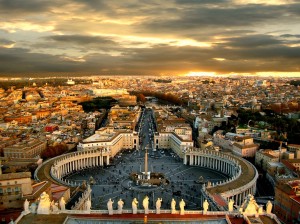


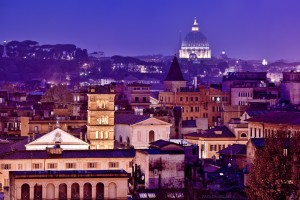




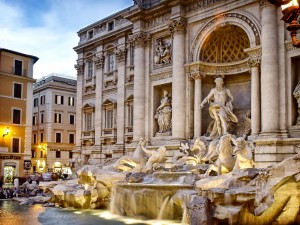







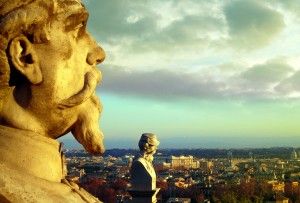
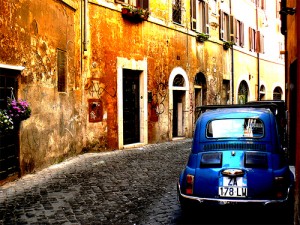





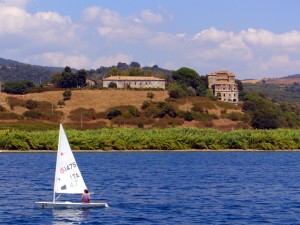
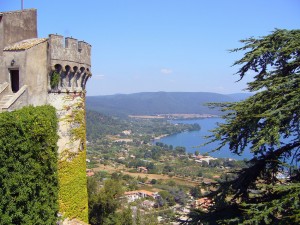



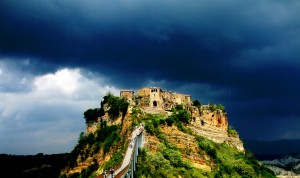



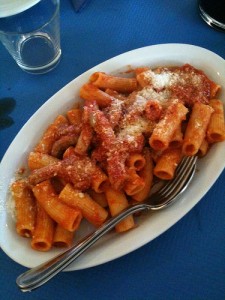



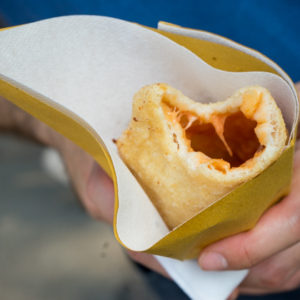

Leave a Reply